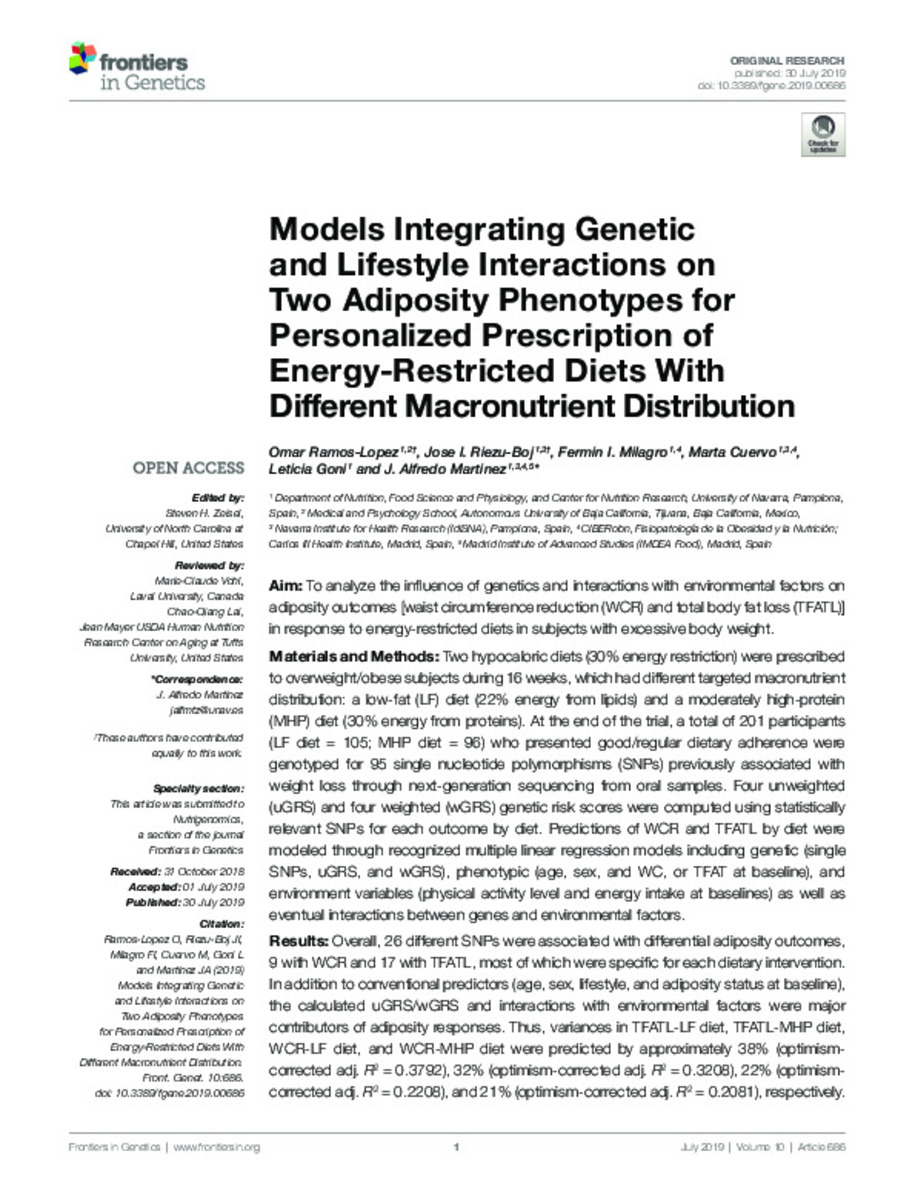Models integrating genetic and lifestyle interactions on two adiposity phenotypes for personalized prescription of energy-restricted diets with different macronutrient distribution
Keywords:
Total body fat loss
Waist circumference reduction
Diets
Genetics
Publisher:
Frontiers Media SA
Note:
This is an open-access article distributed under the terms of the Creative Commons
Attribution License (CC BY). The use, distribution or reproduction in other forums
is permitted, provided the original author(s) and the copyright owner(s) are credited
and that the original publication in this journal is cited, in accordance with accepted
academic practice. No use, distribution or reproduction is permitted which does not
comply with these terms.
Citation:
Ramos-López, O. (Omar); Riezu-Boj, J.I. (José Ignacio); Milagro, F.I. (Fermín I.); et al. "Models integrating genetic and lifestyle interactions on two adiposity phenotypes for personalized prescription of energy-restricted diets with different macronutrient distribution". Frontiers in Genetics. 10, 2019, 686
Statistics and impact
0 citas en

0 citas en

Items in Dadun are protected by copyright, with all rights reserved, unless otherwise indicated.









